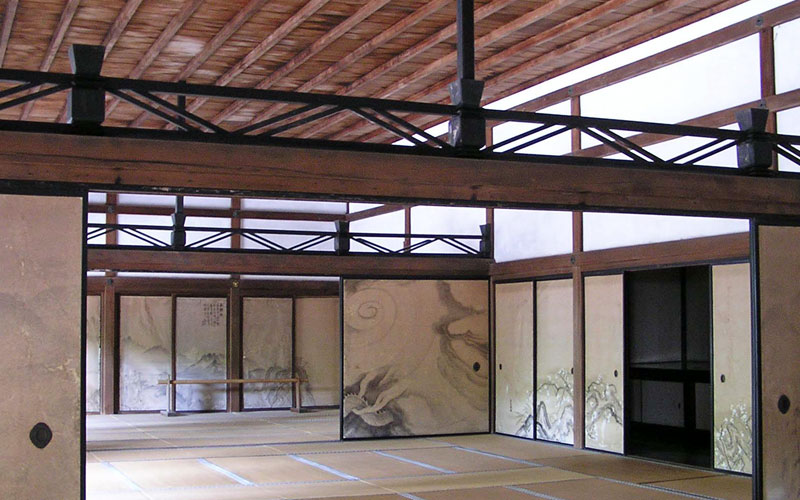|
||
 |
||
Take-no-fushi ranma are used above a lintel, uchiori nageshi ΰ@·, or a panel *wakishouji eαq in temple and shrine architecture. The most decorative type, sometimes covered with black lacquer, are used in aristocratic and chief priests' dwellings *houjou ϋδ. The earliest extant example are found at Myoushinji Reiun-in Shoin Sμ_@@ in Kyoto, Edo period.

Ryouanji
Houjou ΄ΐϋδ (Kyoto)
@
(C)2001 Japanese Architecture and Art Net Users System.@No reproduction or republication without written permission.
fΪΜeLXgEΚ^ECXgΘΗASΔΜRecΜ³f‘»E]ΪπΦΆά·B

